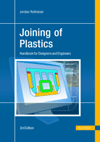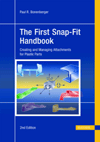In manufacturing, microabrasive blasting is used to precisely clean, cut, deburr or texture various surfaces. Small, abrasive particles are uniformly mixed with an air stream and then propelled out of small nozzle tips. The process is sometimes called "pencil blasting," because the handpiece is held like a pencil and the nozzle opening is the size of a pencil point. A variety of abrasive media can be used with the process, from hard silicon carbide to soft sodium bicarbonate.
Engineers at NASA's Jet Propulsion Laboratory (JPL, Pasadena, CA) became interested in the technology following the 1997 Mars Pathfinder mission. The lander in that mission, the Sojourner robot, was equipped with an alpha proton X-ray spectrometer to obtain chemical information from rock samples. However, the device could only sample the dust coating on top of the weathered and oxidized rocks.
For the next mission, geologists wanted information about the fresh material lying 1 millimeter or more beneath the surface of the rocks. To get that data, they would need a simple, noncontact device that could remove the surface layer without introducing cross-contamination. The device had to be compact and lightweight, and it had to work with just a few watts of power.
JPL consulted with Comco to develop a prototype that would meet these specifications. Working with JPL scientists, Comco custom-built a small microabrasive blaster that can selectively polish Martian rocks with a quick 5-second blast of silicon carbide.
Developed over a 9-month period, the Comco prototype will be part of an instrument that may soon be selected for NASA's next Mars lander mission in 2003.



